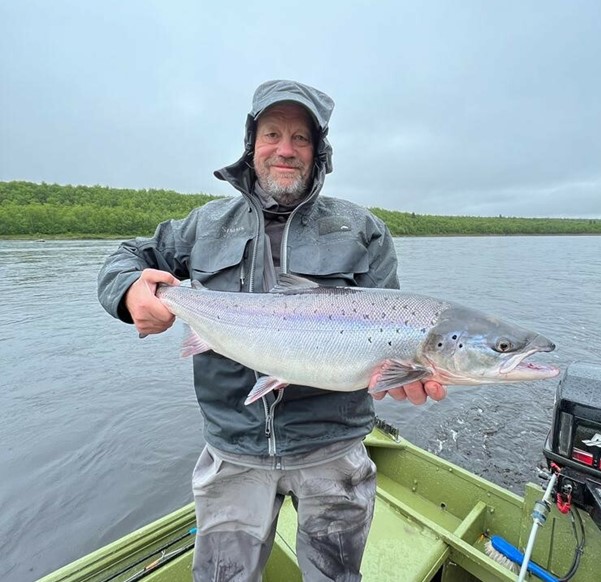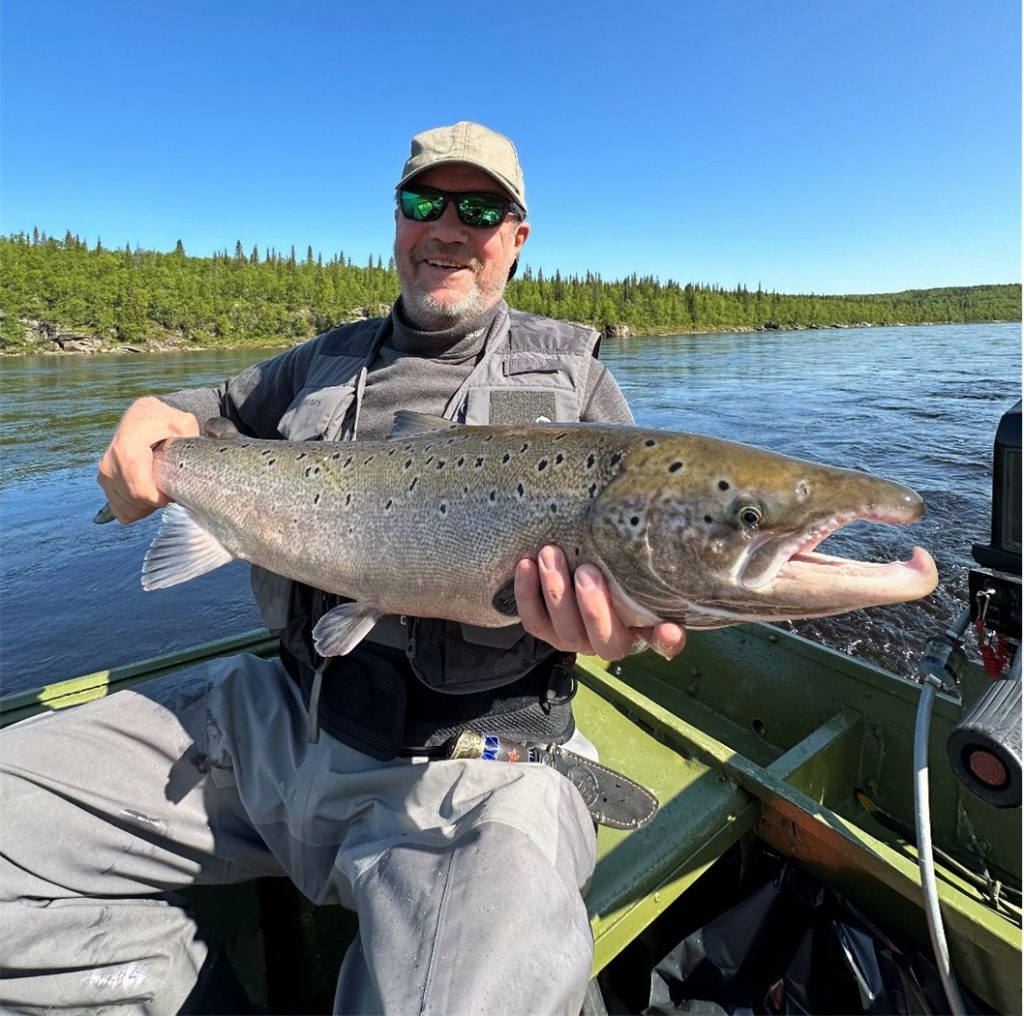Yuri Kudimov is a seasoned angler whose mastery of fly fishing transcends the ordinary. In this article, Yuri Kudimov discusses everything from selecting the perfect gear to mastering casting techniques, providing invaluable insights that will elevate your fly fishing game.
Fly fishing is a captivating and unique form of angling that combines skill, patience, and an appreciation for the great outdoors. Unlike traditional bait or lure fishing, fly fishing involves casting a lightweight, artificial fly on the water's surface to entice fish. If you're new to this fishing style, you're in for an exciting journey. This article will guide you through the essentials of fly fishing and provide tips to help you get started on the right foot.
Yuri Kudimov Explains What Distinguishes Fly Fishing from Other Types
Fly fishing sets itself apart from other types of fishing through its distinct casting technique and lightweight artificial flies. Unlike traditional methods, fly fishing relies on the weight of the fly line to delicately present lightweight flies that imitate insects or aquatic creatures. This precision in presentation is crucial for fooling fish into biting.
The focus on matching the hatch and closely mimicking natural prey is a hallmark of this technique. Yuri Kudimov notes that anglers often carry a minimalist selection of flies, emphasizing the art of casting and technique over a tackle box filled with various lures. Catch-and-release practices, a connection to nature, and an appreciation for the outdoors further distinguish fly fishing as a unique and serene angling experience.
The Main Types of Flies
Fly fishing involves using a variety of fly patterns, each designed to imitate different types of aquatic insects and creatures. These various fly types are carefully selected and used by anglers to match the insects and prey present in the fish's environment, increasing the chances of a successful day on the water. The choice of fly depends on the specific fishing conditions, the behavior of the fish, and the angler's strategy.
Here are the main categories of flies the average angler will encounter:
Dry Flies
These are lightweight flies that float on the water's surface. They are designed to mimic insects like mayflies, caddisflies, and stoneflies. Dry flies are most effective when fish are rising to the surface to feed, making them a top choice for anglers targeting surface-feeding trout and other species.
Wet Flies
Wet flies are designed to sink below the water's surface, imitating nymphs and other underwater prey. They are versatile and can be used at various depths. These flies are excellent for imitating aquatic insects in their larval stage and are often used in subsurface fishing.
Nymphs
Yuri Kudimov says that nymphs are a specific type of wet fly designed to replicate immature aquatic insects. They are meant to be fished underwater and are particularly effective when fish are feeding below the surface. These patterns imitate insects such as mayfly nymphs and caddis larvae.
Streamers
Streamers are typically larger and more colorful flies designed to imitate small fish, leeches, or other aquatic creatures. They are often used for targeting predatory fish species like trout, bass, and pike. Streamers can be retrieved with erratic motions to trigger aggressive strikes.
Terrestrials
Terrestrial flies imitate land-based insects and other creatures that fall into the water, such as ants, grasshoppers, and beetles. They are particularly effective during the warmer months when these insects are abundant near the water's edge.

 Essential Fly Fishing Equipment and Gear
Essential Fly Fishing Equipment and Gear
To embark on a successful fly fishing adventure, you'll need a set of essential equipment and gear. Here's a breakdown of what you'll need as a beginner in the world of fly fishing:
Fly Rod and Reel
Fly fishing gear is made up of two important components: the fly rod and the reel. Yuri Kudimov explains that the fly rod allows for casting, while the reel provides storage space as well as resistance when a fish bites on your hook, making it easier to haul in that catch.
The type of rods and reels you need depends upon how often or where you are fishing - whether it is freshwater or saltwater, which species are present – plus what kind of angling approach you’re taking with your chosen flies.
Fly Line
These lines are specifically designed for fly fishing. They come in different types, including floating, sinking, and intermediate lines, each suited to various fishing conditions and techniques. The choice of fly line is crucial for casting and presentation.
Flies
Yuri Kudimov says that fly fishing heavily relies on the use of flies to imitate the natural diet of various fish species, which can greatly increase success. They come in a variety of types and each type has its own purpose – from dry-flies, wet-flies & nymphs for freshwater applications or streamers and terrestrials when targeting saltwater species.
Using an appropriate fly ensures that your imitation resembles what the fish will feed upon under different conditions, enhancing your chances of catching them!
Net
A landing net is essential for safely catching and releasing fish without causing harm. Look for a net with a rubberized or knotless bag to protect the fish's delicate scales and fins.
Fishing Clothing
Invest in comfortable and weather-appropriate clothing for your trips. Depending on the season and water conditions, this may include waders, wading boots, breathable clothing, a brimmed hat, and polarized sunglasses to reduce glare on the water.
Understanding Fish Species and Their Habitats
Yuri Kudimov explains that to become a successful fly angler, understanding fish species and their preferred habitats is foremost. Different fish exhibit unique behaviors, environmental preferences, and feeding patterns. Whether you're targeting trout in mountain streams or bass in a serene lake, research the specific species you're after. Consider their preferred water temperature, habitat, and structure. Recognize the depth at which they commonly dwell and the primary food sources in their diet.
Pay attention to the time of day and weather conditions that influence their activity. Local knowledge from experienced anglers and bait shops can provide valuable insights, helping you refine your approach and enhance your chances of a productive day on the water.
Furthermore, Yuri Kudimov says that respecting catch and release practices ensures the sustainability of fish populations and the ecosystems they inhabit.
Developing Your Casting Techniques
Developing proficient casting techniques is a fundamental aspect of becoming a successful fly angler. Here's a guide to help you refine your fly-casting skills:
 Understanding the Basics
Understanding the Basics
Learning the basics of casting is essential to mastering fly fishing. This includes loading and stroking the rod correctly, as well as developing an effective technique for stopping it. There are two primary methods - overhead cast and roll cast - which necessitate practice in order to master them both. Practicing with a weighted line can help build familiarity with your equipment so that you have strong fundamentals for beginning your fly-fishing journey.
Grip and Stance
Yuri Kudimov says that having the proper posture and grip is essential for mastering your cast with accuracy and skill. To attain this, you must tightly hold the rod in your dominant hand while standing evenly balanced with both feet shoulder-width apart toward where you are casting. Experimenting by changing positions or utilizing different types of flies will refine your stance, which consequently optimizes your overall performance when fishing.
The Basic Cast
Fly fishers should master the basic cast, which requires a forward and backward movement of the rod to launch the line. To perform this essential technique, stand with feet shoulder-width apart while keeping your dominant hand on hold onto the rod. Aim in your preferred direction then commence swinging back and forth until you reach an optimum distance for letting it fall into water again. This repetitive motion is crucial for fishing success!
False Casting
Practice false casting to increase line length and improve accuracy. False casting involves making repeated back-and-forth casts without the line touching the water. This can be useful for adjusting the line's length or for drying a waterlogged fly.
Shooting Line
Shooting line is a technique to achieve longer casts. As you make your forward cast, release the line through your non-dominant hand to let it shoot forward. This adds distance to your cast.
Practice, Practice, Practice
Yuri Kudimov explains that mastery of casting techniques comes with practice. Spend time on the water honing your skills. Experiment with different casting angles, distances, and techniques to become comfortable and versatile in various fishing situations.
Knot Tying Basics
Learn essential knots used in fly fishing, particularly the knot to attach the fly to the tippet. Common knots include the improved clinch knot, loop knot, and arbor knot for connecting backing to the reel.
Safety Precautions for Fly Fishing Adventures
Safety should always be a priority when fishing. Here are some crucial precautions to follow:
- Be aware of your surroundings and watch for potential hazards.
- Wear appropriate wading gear to stay dry and prevent hypothermia.
- Practice catch-and-release to preserve fish populations.
- Respect fishing regulations and the environment.
- Always inform someone about your fishing plans and location.
- Monitor weather forecasts before heading out. Sudden storms, lightning, and strong winds can pose serious risks
- When fishing from a boat or float tube, wear a PFD (life jacket). Accidents can happen, and a PFD could be a lifesaver
- In areas with biting insects, carry insect repellent to avoid discomfort and potential diseases
- Pack a basic first aid kit for minor injuries, such as cuts or hook accidents. Be prepared for potential emergencies
Summary
As you embark on your fly fishing journey, remember that practice and patience are key to mastering this art. Over time, you'll develop the skills and knowledge needed to become a proficient fly angler. Enjoy the process, savor the moments on the water, and relish the beauty of nature that fly fishing brings into your life. Happy fishing!

 Essential Fly Fishing Equipment and Gear
Essential Fly Fishing Equipment and Gear Understanding the Basics
Understanding the Basics